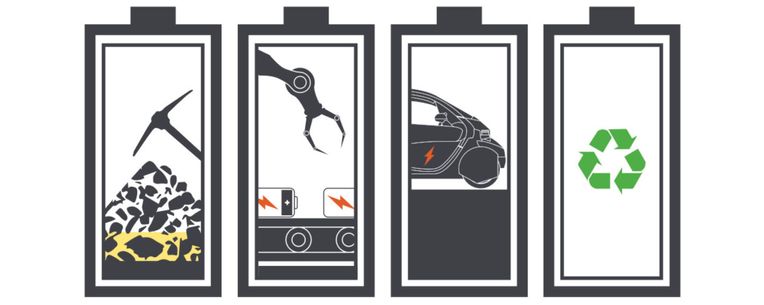Safe and sustainable Li-ion batteries
Topics: Batteries, sustainability, safety
Type: White paper
Publication date: June 2022
Partner: Energy Futures Lab
Download
Full paper: Safe and sustainable lithium ion batteries [PDF]
Launch
Watch the launch of the briefing paper [YouTube, 65 mins]
Authors
Evangelos Kallitsis, Laura Lander, Jacqueline Edge, Laura Bravo Diaz, Alexander Brown, Geoff Kelsall, Gregory Offer, Anna Korre
Summary
The transition to clean energy and electric mobility is driving unprecedented demand for lithium ion batteries (LIBs). This paper investigates the safety and sustainability of LIBs, exploring ways of reducing their impact on the environment and ensuring they do not pose a danger to health of workers or users.
The battery life cycle is a complex web of inputs and outputs, from initial mineral processing through to end-of-life recycling. Key measures that would increase life cycle sustainability are shown, including 1) the recycling of components to bypass materials processing and component manufacture stages, 2) identifying usable cells for reuse, and 3) providing second life options during de-integration. Implementing these measures would reduce energy, water, chemical and resource usage, ultimately accelerating product sustainability.
Each step in the value chain also bears safety risks either from the use of harmful chemicals during materials mining, processing and recycling, unsafe working conditions or through inherent battery features. Continuous battery research and improved engineering are crucial to reduce the severity and likelihood of safety incidents. The use of non-toxic materials, safety engineering using thermally stable battery components, and the replacement of liquid organic electrolytes by solid-state electrolytes are promising routes towards enhanced battery safety.



